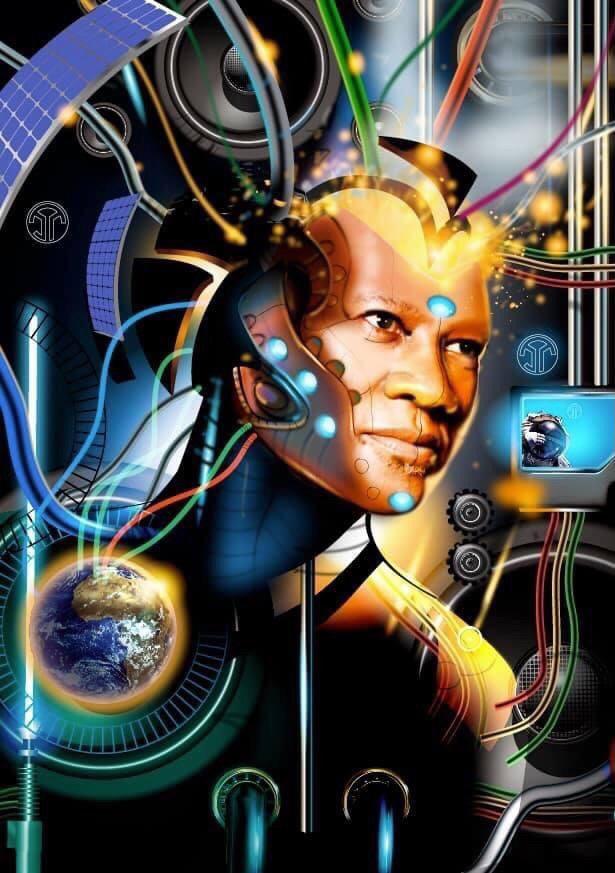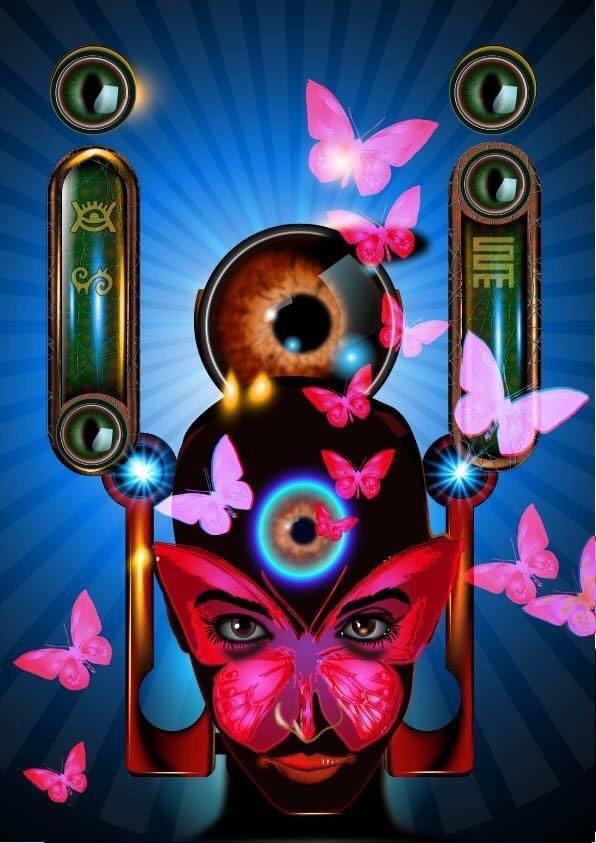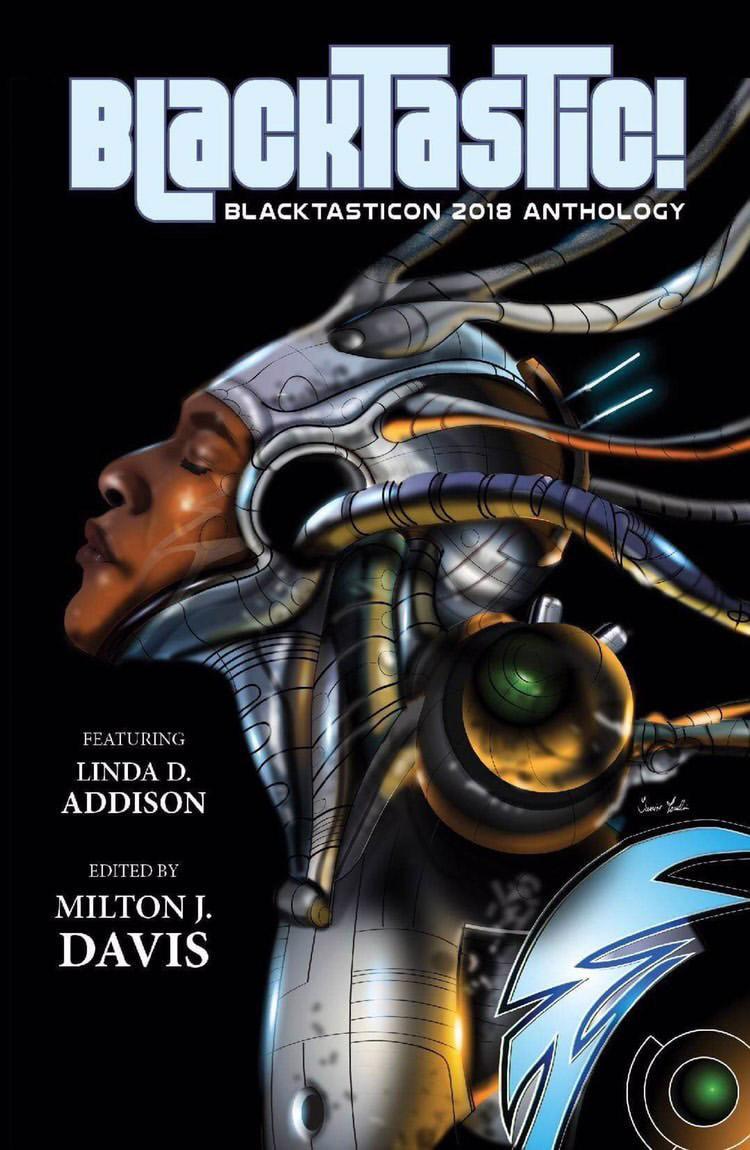
3 minute read
Junior Tomlin

Junior Tomlin was born and raised in Ladbroke Grove, west London. He excelled in art from an early age, copying comic books with precision and flair and creating accurate copies for school friends. Renowned for his stunning images, Junior’s visionary work combines influences from sci-fi, surrealism, fantasy, futurism and comics, resulting in a collection of artwork that defined an era and earned him the title ‘The Salvador Dali of Rave’. Starting in the video games industry, after he left Goldsmith’s University with a diploma (LDAD) in Graphic Design, Junior went on to work at a couple of infamous record labels - Vinyl Solution and Kickin’ Records. In 1989 he designed his first record cover, ‘Space Gladiator’ for Renegade Soundwave. Later, while working at Kickin’, Junior met a promoter named Scott, who was organising his first-ever event, RaveWorld. With a limited budget, he could only afford to print a flyer in three colours; black, white and blue. Junior’s first flyer design - three surreal heads floating in space - materialised out of this limited palette and remained one of his favourites. This was the genesis of a crucial stage in his artistic career.
Advertisement
That first commission was the gateway to more work within the rave community. He eventually worked with some of the most seminal promoters from 1992 onwards, including Telepathy, Dreamscape, Slammin’ Vinyl, One Nation, Dream Odyssey and Revelation. At Kickin’ Junior also designed many record covers, the first of which coincided with the release of ‘Women Respond To Bass’ by Renegade Soundwave, who was signed to Mute Records in the same year. From that point onwards, Junior’s work became synonymous with flyers and record covers, hired by record labels such as Kickin’ Records, React, ZTT, Arista and Mute. They all utilised his exceptional imagination to give their releases unique visual appeal.
Junior’s work continued to command the attention of thousands of ravers throughout the nineties, providing the perfect visual accompaniment to what was a revolutionary new movement. His art inspired countless people, from fellow designers and DJs to record label owners, promoters, musicians and the ravers themselves, many of whom collected his unmistakable flyers. His work was highly sought-after and remains as popular now among flyer collectors as it was over 25 years ago. Junior’s artwork traverses the full spectrum of future projections, with cyborgs, robots, surreal humanoid creatures from other dimensions, fantasy worlds, images from outer space, psychedelic hallucinations and myriad other mind-bending creations. Initially, his work was all made by hand using airbrushes. However, he now uses digital software to bring the inner workings of his fantastic mind to life - still working with a pencil and paper to sketch out the initial ideas.
Outside the rave scene, Junior has lent his superlative skills to a wide range of industries, from comic books to the big screen, Creature Technician for the horror movie Nightbreed by the legendary Clive Barker, among others, where he created masks for the characters in the film. He was also a colourist on a variety of famous comic titles, including Judge Dredd, Action Man, Transformers Armada and Teenage Mutant Ninja Turtles, working for Marvel, Panini, Titan and 2000AD. In 2000 he was one of 125 cartoonists who appeared at the Guinness World of Records in London’s Trocadero to draw the 250-panelled comic strip ‘The Worm’ - the longest strip ever to be completed in one sitting. Junior was also one of the founders of The London Cartoon Centre, which was set up in 1987 and was known as ‘The Cartoon Workshop’. It was a seminal place for 18 to 25-year-olds who wanted to learn how to create sequential art. He later went on to teach airbrushing at the centre for a time.
In recent years he has explored.





